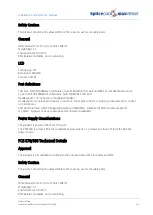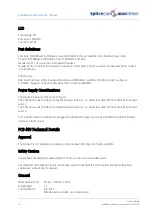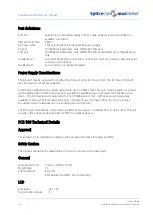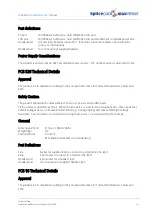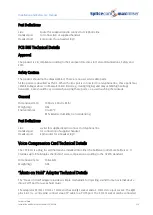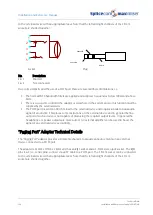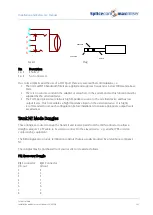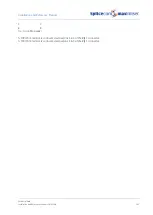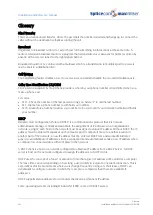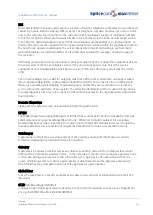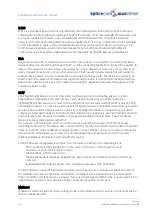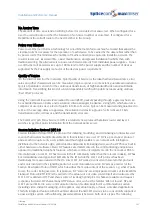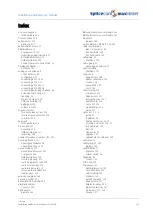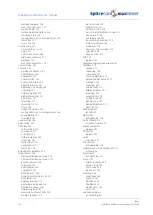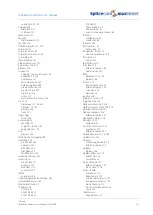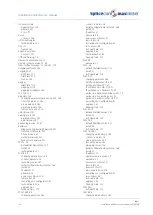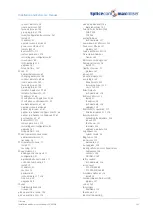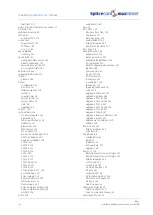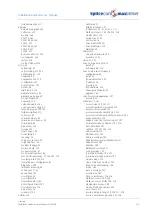
Installation and Reference Manual
Glossary
Installation and Reference Manual v3.2/0410/6
347
No Answer Time
The amount of time an extension will ring before it is considered not answered. When configured for a
User the call will route to either the Forward on No Answer number or voicemail. If configured for a
Department the call will route to the next member in the Group.
Power over Ethernet
Power over Ethernet (PoE) is a technology for wired Ethernet LANs (Local Area Networks) that allows the
electrical current, necessary for the operation of each device, to be carried by the data cables rather than
by power cords. This minimizes the number of mains connections required to install the network. The
result is lower cost, less downtime, easier maintenance, and greater installation flexibility than with
traditional wiring. The alternative is to power each device directly from individual power supplies. Power
over Ethernet will power devices up to 100 meters from the power supply and the number of devices
supported by the PoE supply is a factor of the devices power requirement.
Quality of Service
On the Internet and in other networks, QoS (Quality of Service) is the idea that transmission rates, error
rates, and other characteristics can be measured, improved, and, to some extent, guaranteed in advance.
QoS is of particular concern for the continuous transmission of highSession Initiation Protocol (SIP) 2.0
Session Initiation Protocol (SIP) is a protocol for initiating, modifying, and terminating an interactive user
session that involves multimedia elements in this instance Voice over IP. SIP is a peer-to-peer protocol
and as such it requires only a very simple (and thus highly scalable) core network with intelligence
distributed to the network edge, embedded in endpoints (terminating devices such as IP Phones built in
either hardware or software). Many SIP features are implemented in the communicating endpoints as
opposed to traditional telephony features, which are commonly implemented in the network or PBX. A
direct alternative to H.323, SIP has its roots in the IP community rather than the telecom industry. SIP has
been standardised and governed primarily by the IETF while the H.323 VoIP protocol has been
traditionally more associated with the ITU. Like H.323, SIP works in concert with several other protocols
and is only involved in the signalling portion of a communication session. SIP acts as a carrier for the
Session Description Protocol (SDP), which describes the media content of the session, e.g. what IP ports
to use, the codec being used etc. In typical use, SIP “sessions” are simply packet streams of the Real-Time
Transport Protocol (RTP). RTP is the carrier for the actual voice or video content itself and is also used by
H.323. SIP is similar to HTTP and shares some of its design principles: It is human readable and request
response structured. SIP shares many HTTP status codes, such as the familiar ‘404 not found’. SIP and
H.323 are not limited to voice communication but can mediate any kind of communication session
including video, instant messaging, online games, and virtual reality, or future, unrealised applications.
This fully integrated feature within maximiser allows SIP and H.323 devices to be concurrently supported
across a single system, with calls being passed seamlessly between both device types. The following

